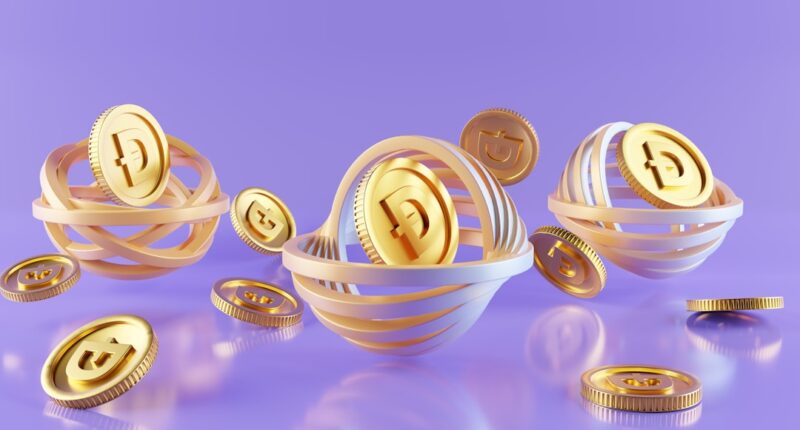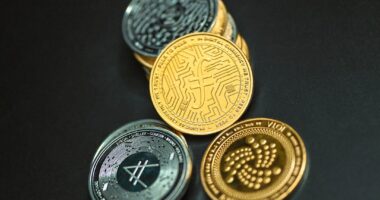NFT floor price is the lowest price at which a specific NFT (non-fungible token) is available for purchase in the market. It represents the minimum amount a seller is willing to accept for their NFT. The floor price serves as a crucial indicator in the NFT market, providing a baseline value for a particular NFT collection or individual token.
Various factors influence the floor price, including rarity, demand, and overall market sentiment for the NFT. Market dynamics and external factors can cause fluctuations in an NFT’s floor price. Supply and demand play a significant role, as do events such as celebrity endorsements or media coverage.
For instance, a limited edition NFT collection released by a popular artist may experience an increase in floor price due to high demand from fans and collectors. Conversely, an oversupply of similar NFTs in the market may lead to a decrease in floor price as supply exceeds demand. Both buyers and sellers in the NFT market rely on floor price information to inform their pricing strategies and investment decisions.
The concept of floor price in the NFT market is analogous to the reserve price in traditional auctions, where sellers set a minimum acceptable price for an item. In the context of NFTs, the floor price acts as a reference point for potential buyers, indicating the lowest price at which they can acquire a specific NFT. This metric plays a significant role in determining the perceived value and desirability of an NFT within the broader market.
Key Takeaways
- NFT floor price is the minimum price at which an NFT is being sold on the market, and it can fluctuate based on demand and supply.
- The dark side of the NFT market includes manipulation and pump and dump schemes, which can artificially inflate prices and mislead investors.
- NFT floor price can impact crypto jobs by creating demand for roles related to NFT valuation, analysis, and market manipulation prevention.
- The NFT floor price can also have an influence on the Bitcoin market, as it reflects the overall sentiment and activity in the NFT space.
- NFT floor price can impact NFT jobs by creating opportunities for roles related to NFT valuation, curation, and market analysis.
- To navigate the dark side of the NFT market, investors and creators should conduct thorough research, be cautious of hype, and seek transparency in transactions.
- The future of NFT floor price may involve regulation, transparency, and sustainability measures to ensure a more stable and trustworthy market.
The Dark Side of NFT Market: Manipulation, Pump and Dump Schemes
The “Pump and Dump” Scheme
The NFT market has been plagued by various forms of manipulation and fraudulent activities, with one of the most common schemes being the “pump and dump” tactic. This involves individuals or groups artificially inflating the value of an NFT through false or misleading information, only to sell off their holdings at a profit once the price has peaked. This practice can have devastating effects on unsuspecting investors who are left holding devalued NFTs after the scheme has run its course.
Price Manipulation through Coordinated Activities
In addition to pump and dump schemes, the NFT market has also seen instances of price manipulation through coordinated buying and selling activities aimed at artificially inflating or deflating the floor price of specific NFT collections. This type of manipulation can create a false sense of scarcity or demand, leading to inflated prices that are not reflective of the true value of the NFTs. As a result, unsuspecting buyers may end up overpaying for NFTs that have been artificially hyped by manipulative tactics.
The Need for Transparency and Regulation
The prevalence of manipulation and fraudulent activities in the NFT market underscores the need for greater transparency and regulation to protect investors and ensure the long-term sustainability of the market. As the popularity of NFTs continues to grow, it is imperative for industry stakeholders, including platforms, creators, and investors, to work together to combat these illicit practices and uphold the integrity of the NFT market.
NFT Floor Price and Its Impact on Crypto Jobs

The concept of NFT floor price has significant implications for individuals working in the crypto industry, particularly those involved in NFT creation, trading, and investment. For creators, understanding the floor price of their NFTs can help inform pricing strategies and revenue projections for their work. By monitoring market trends and demand for similar NFTs, creators can gauge the potential value of their collections and make informed decisions about pricing and distribution.
On the other hand, traders and investors in the NFT market rely on floor prices as a key indicator of value and potential return on investment. A low floor price may signal an opportunity for investors to acquire undervalued NFTs with potential for future appreciation, while a high floor price may indicate strong demand and scarcity for a particular collection. As such, floor prices play a crucial role in shaping investment decisions and trading strategies within the crypto industry.
Moreover, the growing popularity of NFTs has created new job opportunities within the crypto space, including roles related to NFT curation, marketing, and platform development. As the market continues to evolve, individuals with expertise in NFT valuation and market analysis will be in high demand to help navigate the complexities of this emerging asset class.
The Role of NFT Floor Price in Bitcoin (BTC) Market
The relationship between NFT floor prices and the broader cryptocurrency market, particularly Bitcoin (BTC), is complex and multifaceted. While Bitcoin and NFTs are distinct asset classes with different use cases and value propositions, they are interconnected through their shared association with blockchain technology and digital ownership. As such, fluctuations in Bitcoin prices can have ripple effects on the NFT market, including floor prices for individual tokens and collections.
For example, during periods of bullish sentiment in the cryptocurrency market, where Bitcoin prices are surging, there may be increased demand for NFTs as investors seek alternative assets for diversification and speculation. This heightened interest in NFTs can drive up floor prices as buyers compete for limited edition tokens or sought-after collections. Conversely, during bearish market conditions, where Bitcoin prices are declining, there may be downward pressure on NFT floor prices as investors become more risk-averse and prioritize liquidity over speculative assets.
Furthermore, the correlation between Bitcoin prices and NFT floor prices underscores the interconnected nature of digital assets within the broader crypto ecosystem. As such, investors and market participants should consider macroeconomic trends and developments in Bitcoin markets when evaluating potential investments in NFTs.
NFT Floor Price and Its Influence on NFT Jobs
The concept of NFT floor price has implications for job opportunities within the NFT ecosystem, particularly for individuals working in roles related to platform development, curation, and marketing. As the demand for NFTs continues to grow, platforms that facilitate the creation, sale, and trading of NFTs will require skilled professionals to develop user-friendly interfaces, implement security measures, and optimize marketplace functionality. Additionally, individuals with expertise in NFT curation and valuation will be essential for identifying high-quality collections and tokens with potential for long-term value appreciation.
By analyzing market trends and floor prices, these professionals can help guide creators and investors toward strategic decisions that align with market demand and consumer preferences. Moreover, marketing roles within the NFT space will be critical for promoting collections, engaging with audiences, and driving demand for specific tokens. As floor prices serve as a key indicator of value and desirability within the market, marketing professionals will play a crucial role in shaping consumer perceptions and generating interest in new NFT releases.
Overall, the growing popularity of NFTs is creating new job opportunities within the digital asset space, with a particular emphasis on roles that leverage expertise in valuation, curation, and marketing to navigate the complexities of this emerging market.
How to Navigate the Dark Side of NFT Market: Tips for Investors and Creators

Conducting Due Diligence as an Investor
To avoid falling prey to manipulation and fraudulent activities in the NFT market, investors must exercise caution and conduct thorough research. Here are some essential tips to keep in mind:
* Conduct thorough research: Before investing in an NFT collection or token, research the creator, their track record, and the underlying value proposition of the asset.
* Seek transparency: Look for platforms that prioritize transparency and authenticity in their curation process, including verification of ownership rights and provenance.
* Diversify your portfolio: Avoid putting all your investment capital into a single NFT or collection. Diversification can help mitigate risk and exposure to potential manipulation or fraudulent schemes.
* Stay informed: Keep abreast of market trends, regulatory developments, and industry news to make informed investment decisions based on reliable information.
Best Practices for Creators
Creators also play a crucial role in maintaining the integrity of the NFT market. Here are some best practices to follow:
* Set fair pricing: When determining the floor price for your NFTs, consider factors such as rarity, demand, and market dynamics to ensure fair value for both yourself and potential buyers.
* Build trust: Establish credibility and trust with your audience by providing transparent information about your creative process, ownership rights, and future plans for your NFT collections.
* Engage with your community: Cultivate a loyal following by engaging with your audience through social media, virtual events, and exclusive perks for collectors.
* Protect your work: Implement measures to safeguard your intellectual property rights and prevent unauthorized use or distribution of your creations.
Mitigating Risks in the NFT Market
By following these tips, investors and creators can navigate the complexities of the NFT market while mitigating risks associated with manipulation and fraudulent activities. Remember, caution and due diligence are essential in this space.
The Future of NFT Floor Price: Regulation, Transparency, and Sustainability
As the NFT market continues to evolve and mature, there is growing recognition of the need for regulation, transparency, and sustainability to ensure its long-term viability. Regulatory oversight can help combat illicit activities such as price manipulation and fraudulent schemes while providing greater investor protection and market integrity. Transparency in NFT curation processes, ownership rights, and provenance will be essential for building trust among collectors and investors.
Platforms that prioritize authenticity and verification will likely gain a competitive edge as consumers seek assurance that they are acquiring genuine assets with lasting value. Sustainability is another key consideration for the future of NFTs, particularly in light of concerns surrounding environmental impact due to energy-intensive blockchain networks. As the industry grapples with these challenges, there is an opportunity to explore alternative solutions that minimize carbon footprint while maintaining the integrity of digital ownership.
In conclusion, the future of NFT floor prices will be shaped by efforts to promote responsible practices, ethical standards, and consumer confidence within this burgeoning market. By prioritizing regulation, transparency, and sustainability, stakeholders can work together to foster a healthy ecosystem that benefits creators, investors, and consumers alike.
FAQs
What is NFT floor price?
NFT floor price refers to the lowest price at which a particular non-fungible token (NFT) is being sold on the market. It is essentially the baseline price for that NFT, and it can fluctuate based on supply and demand dynamics.
How is NFT floor price determined?
The NFT floor price is determined by the current market conditions, including the number of similar NFTs available for sale, the level of interest from potential buyers, and the perceived value of the NFT within the community.
What is the dark side of NFT floor price?
The dark side of NFT floor price involves potential market manipulation, price fixing, and artificial inflation of prices by certain individuals or groups. This can create a false sense of value and lead to unsustainable price bubbles within the NFT market.
How can one protect themselves from the dark side of NFT floor price?
To protect themselves from the dark side of NFT floor price, individuals should conduct thorough research, seek advice from reputable sources, and be cautious of overly inflated prices. Additionally, they should be aware of potential market manipulation tactics and exercise due diligence before making any NFT purchases.





